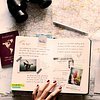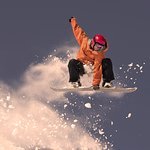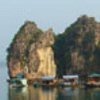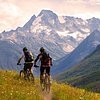Telluride & Ouray Ice Climbing Courses
Both our Introductory and Intermediate/Advanced Ice Climbing Courses take place over two full days in the Ouray Ice Park. Courses are lead by AMGA trained or certified guides, who will provide expert instruction and first-hand knowledge with climbers. Once you’ve taken the Intro to Ice Course, consider taking the Intermediate/Advanced Ice Course to further improve your skills. By taking both courses, it’s our hope that a fit climber will go from never having kicked a crampon into ice to climbing steep Grade WI4+ ice routes and navigating mixed climbs with a solid level of proficiency.
Intro to Ice Climbing Course
Our Intro to Ice Course is intended for anyone interested in learning the skills necessary to efficiently climb moderately steep ice. If you are a first-time climber who is curious about ice climbing, or an experienced rock climber looking to expand to frozen routes, this course is a great way to test it out and take the initial steps to develop a foundation for the sport.
The course is an intro to top rope ice climbing. It focuses on ice climbing basics, including proper technique, equipment, terminology and communication, top rope belay and lowering, and risk management. Our pedagogy, developed over decades of instructing ice climbers, will provide the building blocks for efficiently climbing WI3 and some WI4 routes.
Intermediate/Advanced Ice Climbing Course
If you have climbed ice several times—guided or unguided—our Intermediate/Advanced Ice Course will help further develop the skills necessary for climbing consistently steep ice. This course is geared toward the experienced rock climber who already possesses a lot of vertical awareness and rope skills, as well as the novice ice climber hoping to up their climbing to the next level.
Our goal is to have you feeling comfortable on WI4 to WI4+ terrain. Ice climbing is less intuitive than rock climbing, so learning skills to economize your movements and move efficiently are critical for having success on steeper ice. The course can also be taken in conjunction with the Intro to Ice Course, or booked on a private, custom basis at any time throughout the season.
To make a reservation, please click below.
Intro to Ice Course - Register Intermediate/Advanced Ice Course - Register
For ice climbing trips in Telluride and Ouray, see our Half-Day Telluride Ice, Backcountry Ice, and Ouray Ice Park options.
If you have questions or are looking for more advanced instruction for mixed ice climbing, multi-pitch routes or hard alpine objectives, please contact the Mountain Trip office at [email protected] or (970) 369-1153.






























